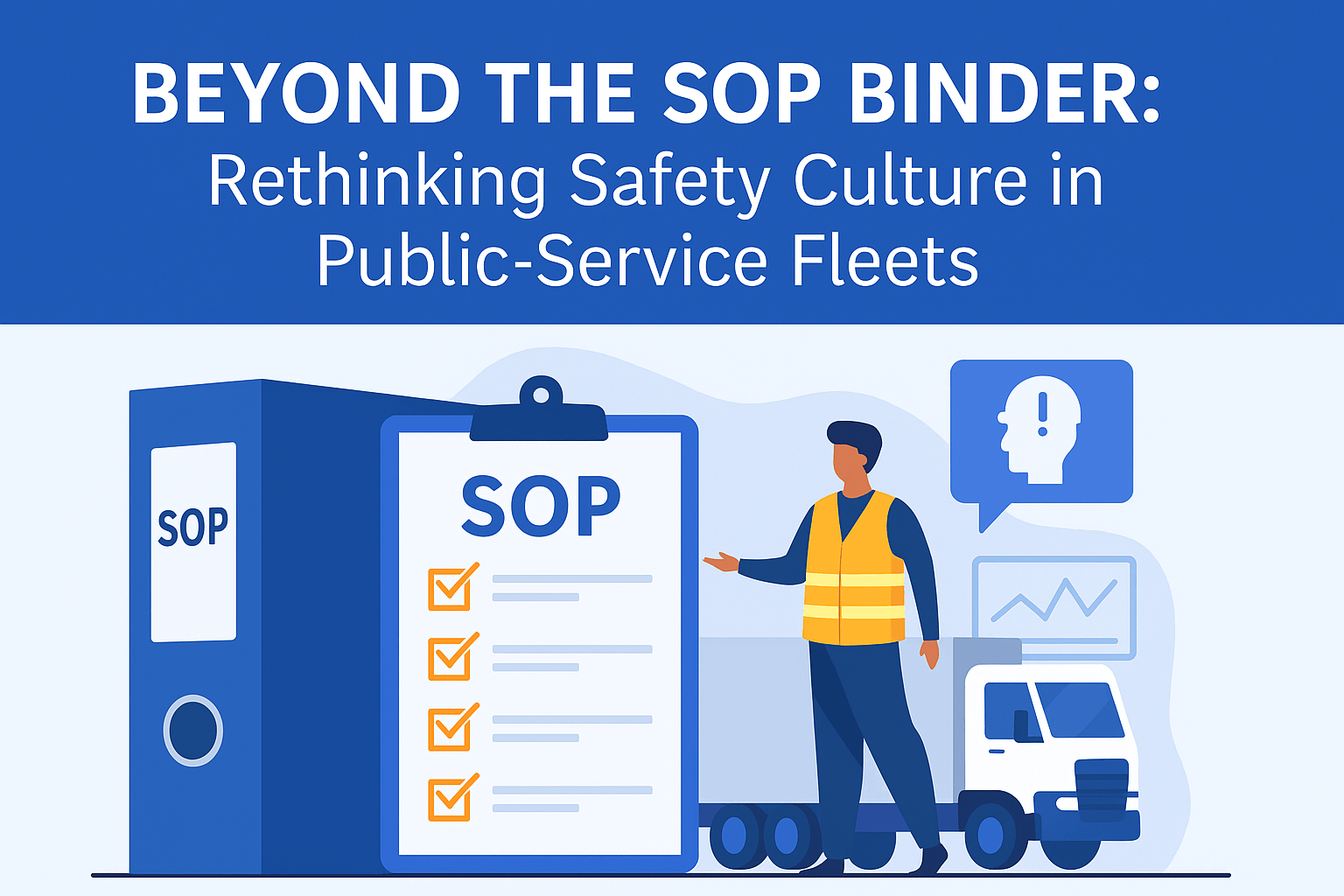
Fleet trainers know the struggle too well: trying to improve safety metrics with experienced drivers who believe they’ve mastered the road. “I’ve been driving for 20 years …..” becomes the invisible wall between your safety program and actual improvement. But what if you could train those safety-resistant veterans without them even realizing it? Enter the fuel efficiency program – your Trojan horse for safety training.
The Psychology of Resistance
Veteran drivers often display a psychological barrier to traditional safety training:
- They perceive safety suggestions as questioning their professional competence
- Years of experience have reinforced their belief in their superior driving skills
- Direct safety coaching can trigger defensiveness rather than openness to change
- The “I already know how to drive safely” mentality creates an immunity to conventional training
However, these same drivers rarely object to initiatives that can put extra money in their pockets.
Why Fuel Savings Creates the Perfect Cover
Fuel efficiency provides the perfect disguise for safety training for several key reasons:
- Fuel efficiency isn’t necessarily “safety”: You’re not questioning their driving abilities – you’re helping them make money2.
- It offers tangible rewards: Incentives tied to fuel savings provide immediate gratification.
- It’s data-driven: Objective metrics remove the perception of subjective criticis.
- It teaches the same skillset: The behaviors that save fuel are precisely those that prevent collisions.
The Identical Twin Skills: Fuel Efficiency and Safety
The beautiful secret? The very same driving behaviors that maximize fuel efficiency are those that prevent collisions:
- Gentle acceleration: Saves fuel while preventing rear-end collisions
- Scanning Ahead: Reduces braking /distracted driving while increasing reaction time to hazards
- Speed management: Optimizes fuel consumption while decreasing incident severity
- Reduced idling: Cuts fuel waste while encouraging attentiveness
Setting Up Your “Secret Safety Program”
Here’s how to implement your covert safety operation:
- Create attention-grabbing incentives: Cash bonuses, gift cards, or recognition programs tied to fuel metrics.
- Establish driver-specific baselines: Account for vehicle type and route variations
- Make it competitive: Leaderboards or team competitions focused on fuel savings
- Provide “fuel efficiency training”: This is where the magic happens – you deliver safety training in disguise.
The Training Disguise: What to Cover
Your “fuel efficiency” training should emphasize:
- Smooth acceleration techniques: Teaching progressive pressure rather than stomping the pedal
- Proper following distance: Framed as “maintaining momentum” to avoid unnecessary braking
- Speed consistency: Demonstrating how steady speeds optimize fuel consumption
- Advanced Scanning Techniques: Anticipating emergencies before they happen
- Vehicle inspection habits: Positioned as “maintaining optimal vehicle performance” rather than safety checks
Implementation Steps: Your Covert Safety Operation
- Start with the money: Lead communications with the financial benefits and incentives
- Rebrand safety concepts: Use fuel-focused terminology for measuring success
- Provide regular feedback: Frame all coaching in terms of fuel performance, not safety violations
- Celebrate fuel champions: Publicly recognize top performers (who, not coincidentally, will be your safest drivers)
- Track both metrics privately: Monitor how safety improves alongside fuel efficiency
Measuring Your Secret Success
While publicly focusing on fuel metrics with your drivers, privately track these correlating safety indicators:
- Hard braking incidents
- Rapid acceleration events
- Speeding occurrences
- Following distance violations
- Distracted Driving
- Incident rates
The beauty of this approach is that as your “fuel program” succeeds, these safety metrics will improve in parallel – all without triggering the resistance that comes with direct safety coaching.
The Psychological Advantage
This approach works because it aligns with fundamental principles of behavior change:
- It respects drivers’ sense of professional identity
- It creates positive motivation (rewards) rather than negative (criticism)
- It focuses on skills development rather than fixing “problems.”
- It acknowledges expertise while offering new ways to excel
When your veteran drivers realize they’ve improved their safety performance, they’re already practicing the behaviors that make it happen.
Remember: Sometimes, the most effective way to improve safety isn’t necessarily by discussing safety. By focusing on the fuel gauge instead of the crash statistics, you might find your fleet becoming safer than ever—with drivers who believe they’re simply becoming more efficient.







